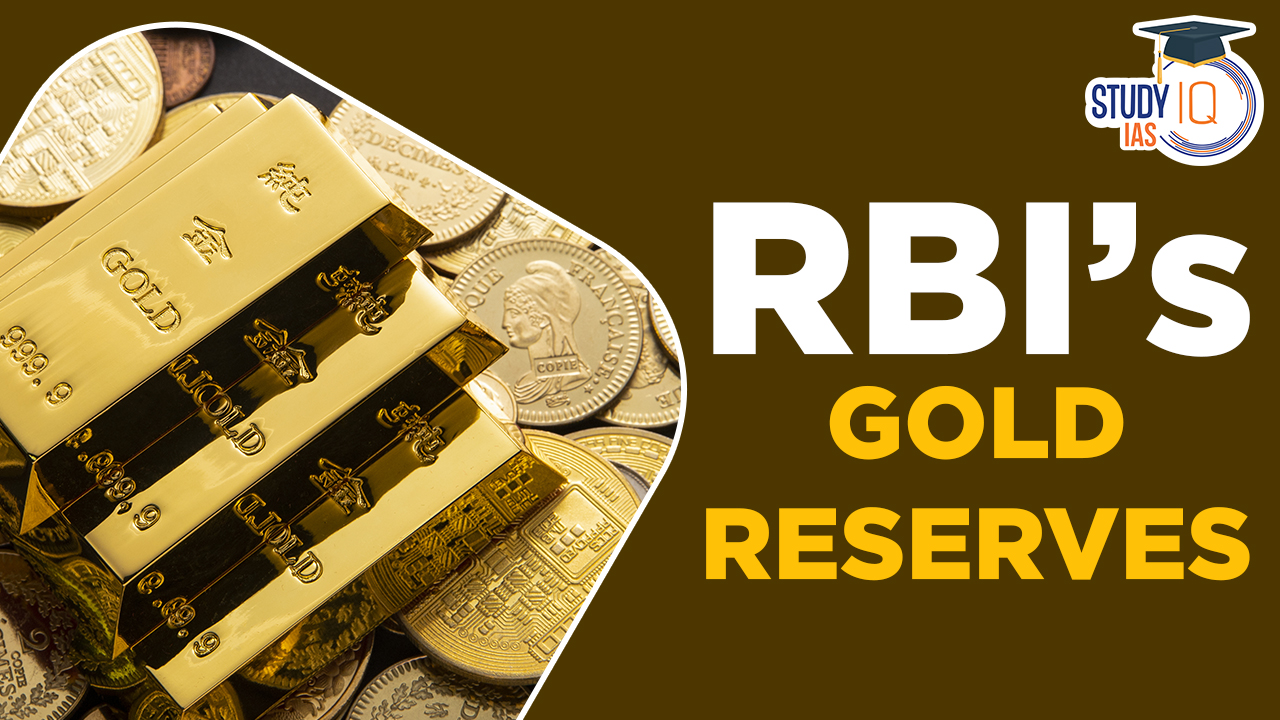Table of Contents
Context: The gold reserves held by RBI have touched 794.64 metric tonnes in fiscal 2023, a near increase of 5 per cent over fiscal 2022.
Reasons for Increase in Buying Gold
- The RBI has kept buying gold as part of the diversification process, considering the fact that gold is more safe, secure, and liquid asset, amidst global uncertainty and a rising inflation scenario.
- In addition, gold is a safe asset due to its liquid nature, has a transparent international pricing, and it can be traded anytime.
- Gold purchasing by countries: Recent trends
- Currently, RBI is among the top five central banks that are buying gold.
- On the global front, the People’s Bank of China (PBoC) and the Central Bank of the Republic of Turkey have been purchasing gold.
- The central banks from the Middle East, including Egypt Iraq, the UAE, Qatar and Oman have also boosted their gold reserves in recent years.
- The Central Bank of Uzbekistan in 2022 also became a net purchaser of gold.
- The Monetary Authority of Singapore in January 2023 became the largest single buyer of gold after it bought 69 tonnes to its gold reserves.
Why RBI and other Central Banks hold Gold as a Reserve?
- Mitigating investment risk: Gold is believed to be a safe investment option that grows positively even during uncertainty and market volatility.
- In case the financial system collapses due to weakening of currency, gold supply provides the means to recover.
- Tackle inflation: Countries need an investment option that is not tied to the value of US Dollars. Even during inflation, gold does not lose its value.
- Domestic financial stability: Central banks need to stabilize their domestic economy in case of crisis. Gold acts as an important way to control size and speed of market growth.
- Long term investment: Gold values are not affected negatively, despite global instability. This makes it an attractive long-term investment option.
- Credit worthiness: A credit worthiness of a country is also determined by how much gold reserves it holds. This is because gold is an asset that carries no credit risk.
- Containing money supply: Gold is available in limited quantity. Creation of money backed by gold asset constraints and limits central banks’ ability to create money.
RBI’s Share of Gold in Forex Reserves
- Out of the total reserves, RBI has held 437.22 tonnes of gold overseas in safe custody with the Bank of England and the Bank of International Settlements (BIS).
- The rest 301.10 tonnes of gold is held domestically.
- As of March 2023, RBI’ foreign exchange reserves (Forex) stood at $578.449 billion. The value of gold reserves in foreign exchange reserves pegged at $45.2 billion.
- The percentage of gold increased from about 7 per cent at the end of March 2022 to about 7.81 per cent at the end of March 2023.
Forex Reserves
- Foreign Exchange Reserves consist of foreign currency assets, gold, special drawing rights (SDR) and reserve tranche position in the International Monetary Fund. It is expressed in US Dollars.
- Foreign currency asset is the largest component of the forex reserve. It is expressed in dollar terms. It consists of currency other than the country’s own currency.
- The SDR is neither a currency nor a claim on the IMF. It is a potential claim on the freely usable currencies of IMF members.
- It is calculated from a weighted basket of major currencies, such as U.S. dollar, the euro, the British Pound, Japanese yen, and Chinese Renminbi.
- Reserve tranche of IMF is the portion of the required quota of currency each member country must provide to the IMF that can be utilized for its own purposes.

How do Central Banks buy Gold?
- Open market: The main source of buying gold is through the Over-the-Counter (OTC) market. This means that a central bank purchases the gold directly from a bullion bank or an internationally-recognized gold refinery.
- IMF: Central Banks can also buy gold from the International Monetary Fund which occasionally holds limited period sale of gold.
- Bank of International Settlements: Another source of gold is the Bank of International Settlements (BIS). This financial institution based in Basel, Switzerland, serves as “a bank for central banks”.
- Local production: Central Banks can also buy locally produced gold. This occurs in gold-producing countries like China, Russia, Canada etc.
Status of Gold Reserves Domestically and Globally
- Currently, the US Federal Reserve tops the list of central bank gold buyers. The US Fed holds 8,133.46 MT of gold.
- German Central Bank is at the second place with 3,355.14 MT of gold reserves.
- Italy, France and Russia make up the top five spots, holding 2,451.84 MT, 2,436.75 MT and 2,301.64 MT, respectively.
- China and Switzerland occupy the sixth and seventh positions with 2,010.51 MT and 1,040 MT.
- Japan (845.97 MT), India (787.4 MT) and the Netherlands (612.45 MT) complete the top 10 countries with gold reserves.
World Gold Council
- The World Gold Council is the market development organisation for the gold industry, whose interest ranges from gold mining to investment, with the aim of stimulating and sustaining demand for gold.
- The organisation involves itself into research that demonstrates gold’s strength as a preserver of wealth – both for individual investors and countries.
- The members of the organization are the leading gold mining companies of the world.


 UPPSC Previous Year Question Papers, Dow...
UPPSC Previous Year Question Papers, Dow...
 Most Commonly Used Cancer Drugs and Thei...
Most Commonly Used Cancer Drugs and Thei...
 Tansen Biography, Musical Legacy and Mas...
Tansen Biography, Musical Legacy and Mas...





















